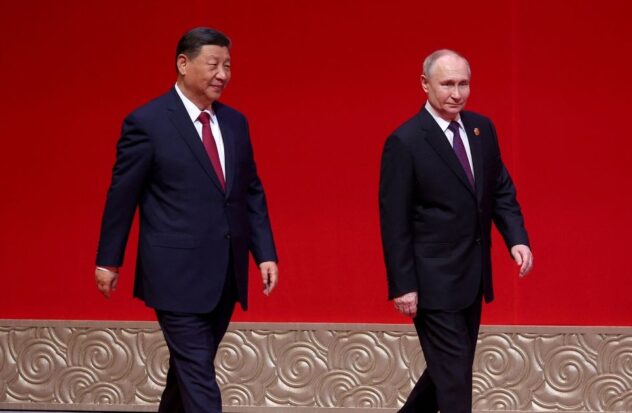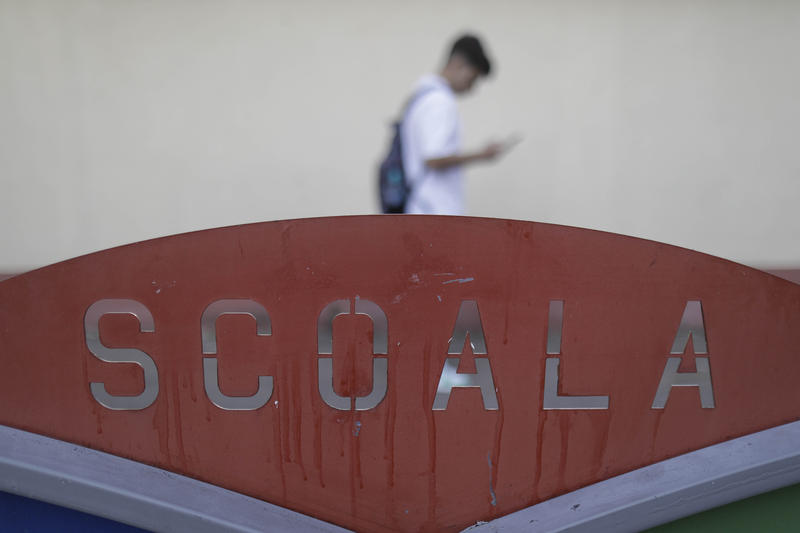China and Russia They continue to strengthen their strategic alignment. Vladimir Putin and Xi Jinping are giving shape, depth and speed to the “partnership without limits and without closed areas of cooperation” that they sealed in 2022. That declaration was signed just twenty days before Moscow invaded Ukraine. On this occasion, Putin’s visit to Beijing – his first international trip in his recently inaugurated fifth term – has been preceded by an important ministerial reshuffle. It is not coincidental. Nothing is in a crucial bilateral relationship for both, very measured in its timing and well choreographed.
After commemorating the 75th anniversary of the establishment of diplomatic relations between both countries in Beijing, the two leaders met in Harbin, the “little Moscow” as a city that connects China with the Russian Far East. Harbin also houses one of the most important military research centers in the country. The local Institute of Technology is a key institution to drive increasingly intense military cooperation focused on sensitive areas such as hypersonic and nuclear propulsion or early detection systems for ballistic missiles. There, this partnership materializes “without limits and without prohibited areas of cooperation.”
Russia will provide relevant assistance in China’s plan to modernize and double or triple its nuclear arsenal in the next ten years. And this tripolar nuclear reality that is emerging is going to be extremely difficult to manage for the United States and even more so for a Europe that is barely aware of the existential threat that threatens it. The competition, rivalry and possible simultaneous confrontation in different theaters with two nuclear adversaries with immense conventional forces is unprecedented.
The Euro-Atlantic strategic lethargy is conditioned by the errors of interpretation and commonplaces that plague the public conversation. The most common is to characterize the relationship between Moscow and Beijing as a “marriage of convenience,” as Secretary of State Anthony Blinken did in recent days. The historical mistrust between both countries in Central Asia, in the Russian Far East or the still latent territorial disputes is also emphasized.
Relevant issues, but secondary in relation to the priority strategic objective they share: putting an end to US global leadership and Western hegemony. This objective prevails over any other consideration and is the key underlying the phrase that Xi told Putin during his visit to Moscow in 2023: “we are witnessing changes not seen in a hundred years. Let’s push (or direct) them together.”
Moscow and Beijing share a diagnosis of the transformation of the global strategic environment and the historic opportunity to forge the multipolar world they long for (read without the preeminence of the US and its allies). In this endeavor, both want to embark on Latin America and the so-called Global South. When China and Russia talk about “preserving justice in the world” it is them they are trying to seduce. However, what Putin has in mind is to subdue Ukraine and reformulate the balance of power in Europe. And what Xi intends is to forge a new order tailored to Beijing’s interests.
Likewise, it is also often emphasized that Russia is becoming an economic vassal of China and that, in the long term, this will be much more dangerous than any disagreement with Europe or the US. Many reiterate it in the hope that Moscow will assume it and distance itself from Beijing. Without a doubt, China is taking advantage of Russian weakness and needs. Chinese commercial penetration is probably irreversible and that includes the yuan now being the reference currency in the bilateral relationship.
However, that is not the Kremlin’s vision and not only because the Chinese lifeline is the best strategic guarantee for Putin in his crusade against Ukraine and the West, but because, rightly or not, it perceives the relationship in terms of equality. Despite the country’s wealth, the Kremlin assumes that it cannot offer prosperity to its citizens because it is not willing to undertake the political reforms necessary to do so. So Chinese participation replacing Europe is welcome and even more so since the Kremlin interprets that it does not entail political risks. Nor territorial as long as it retains its nuclear deterrence capacity.
Furthermore, the human factor should not be minimized. Putin and Xi have met more than 40 times in the last decade. Neither has met with any other foreign leaders. To the annual summit we must add the meetings of the BRICS and the Shanghai Organization. It is convenient to assume, therefore, that Putin and Xi have forged a relationship of genuine mutual trust, based on the alignment of interests.
Therefore, insisting that Europe and the US have “thrown Russia into the arms of China” is not only analytically wrong, but strategically counterproductive. The relationship between Moscow and Beijing has its own dynamic and no incentive that Brussels or Washington can offer will change the current course. To believe otherwise is to naively deceive oneself. Moscow is aware of this Euro-Atlantic perception and does not hesitate to exploit it to encourage division in Europe and the United States. And this despite the fact that the strategic challenge represented by the Sino-Russian axis is taking place in broad daylight without, for the moment, the West being able to articulate a response.
Nicolás de Pedro, Senior Fellow at the Institute for Statecraft in London and collaborator of Sinic Analysis in www.cadal.org


